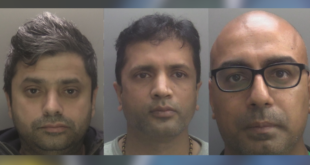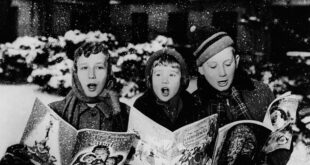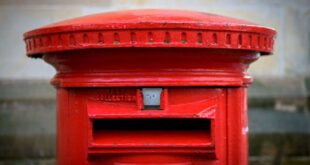
By Amit Roy
SHERLOCK HOLMES is widely recognised as being a great detective in literary fiction but which actor has been best at representing Sir Arthur Conan Doyle’s creation?
This question has come up for debate because Royal Mail has brought out a set of 10 new stamps to mark the popularity of the TV series, Sherlock, which stars Benedict Cumberbatch as Sherlock Holmes and Martin Freeman as the faithful Dr Watson and has been shown in 180 countries. Philip Parker, from Royal Mail, enthused: “We celebrate the enduring fascination with the world’s most famous fictional detective – Sherlock Holmes.”
According to Royal Mail, “when Sir Arthur Conan Doyle published his first Sherlock Holmes novel, A Study in Scarlet, in 1887, he had no idea how iconic the character would become….Doyle would produce 56 Holmes short stories and four full-length novels before laying the character to rest in 1927.”
But there are those who think actors other than Cumberbatch have come closer to playing the kind of character Doyle had in mind – rather than the modern interpretation provided in Sherlock which has not been to everyone’s taste. In a letter (Mastering the manner of the great detective) to a national newspaper last week, Charles Foster, of Chalfont St Peter, Buckinghamshire, pressed the merits of Jeremy Brett (1933-1995).
“While I’m sure the new Sherlock Holmes stamps will be popular with millennials, it would be better if they were to celebrate the original Holmes, instead of marking the 10th anniversary of the BBC’s impenetrable modern-day version,” he argued.
“The late Jeremy Brett’s interpretation of the great detective is the only one fit to adorn the right-hand corner of a letter,” he declared.
When Brett died, Mel Gussow wrote in an obituary for The New York Times that “Mr Brett was regarded as the quintessential Holmes: breathtakingly analytical, given to outrageous disguises and the blackest moods and relentless in his enthusiasm for solving the most intricate crimes”.
However, in a counter letter (Cooler Holmes), Philip Porter, of Knighton on Teme, Worcestershire, made the case for Douglas Wilmer (1920-2016).
Taking issue with Foster’s choice, Porter took a minority view: “In playing the role, Brett was camp and histrionic, later becoming increasingly manic. These are traits never displayed by the cool, calculating machine of the books. Further, as Dame Jean Conan Doyle, Sir Arthur’s daughter, once told me, Brett’s character was rude to ladies – something that Holmes never was.”
Porter went on: “As a former chairman of the Sherlock Holmes Society of London, I must strongly argue the case for Douglas Wilmer, whom many of us consider pre-eminent. Playing the role for the BBC in the mid-sixties, together with Nigel Stock as a doughty Watson, Wilmer’s character was incisive, understated, quietly but effectively dominant and with a dry wit. He brilliantly blended deep thought with bouts of great energy.”
However, Richard Doyle, the author’s great nephew, has given his approval to the new stamps: “In the first chapter of my great uncle Arthur’s famous Sherlock Holmes novel, The Sign of Four, Sherlock remarks upon the sheet of stamps in Watson’s desk – imagine his consternation if it turned out to be this sheet of stamps. What would he have deduced from what he observed? “I hope those who take a close look at these fascinating stamps, observing not just seeing, are inspired to read the original stories and novels written by my great uncle – Sir Arthur Conan Doyle.”
Apart from Holmes and Watson, four of the six stamps in one set feature other characters in the modern version of the Doyle stories – “Jim” Moriarty; Irene Adler; Mary Morstan; and Mycroft Holmes.
When UV light is shone over the stamps hidden details from selected episodes of Sherlock are revealed.
The six episodes featured are A Study in Pink (when Watson meets his new flatmate); The Great Game (when a woman hostage is strapped to a bomb and the great detective is up against the notorious criminal, James Moriarty); A Scandal in Belgravia (when the Irene Adler has compromising photographs of a member of the Royal Family on her phone, and calls on Holmes and Watson to retrieve the device); The Reichenbach Fall (when Moriarty is acquitted of robbing the Bank of England and stealing the Crown Jewels and instead accuses Holmes of being a fraud); The Empty Hearse (when Holmes returns to London two years after faking his suicide); and The Final Problem (when Holmes discovers that in addition to his brother Mycroft, he also has a sister, Eurus).
A further four stamps, presented in a miniature-sheet, feature new illustrations of other stories written by Doyle: The Adventure of the Speckled Band; The Red-Headed League; The Adventure of the Second Stain; and The Adventure of the Dancing Men.
Devised and written by Steven Moffat and Mark Gatiss, Sherlock aired for the first time in July 2010. “This interpretation of Doyle’s mysteries offered audiences a fresh, modern take on his novels and short stories, with an irreverent tone and 21st century technology such as internet searches, texting and GPS,” it was pointed out.
Sue Vertue, producer of the Sherlock series that has won BAFTA and Emmy awards, commented: “We are terribly proud of our Sherlock TV series and now am ridiculously excited about these Royal Mail stamps.”
The Holmes stories are popular worldwide but they seem to have a particular appeal for Indians. Some authors have even tried to write in the style of Doyle and given Holmes cases to solve in India.
Many research scholars have drawn attention to the references to India and Indians in the stories that Doyle did write. For example, in one paper, “Criminality and India in Sherlock Holmes”, Abin Chakraborty wrote: “Empire makes its presence felt in the world of Sherlock Holmes from its very outset. Dr Watson, after all, is a veteran of the Fifth Northumberland Fusiliers who participated in the second Anglo-Afghan War. His accounts not only introduce us to the “murderous Ghazis” of Afghanistan but also the ‘enteric fever, that curse of our Indian possessions’.”
Chakraborty also discusses “the representation of Dr Grimsby Roylott in The Speckled Band and Colonel Sebastian Moran in The Adventure of the Empty House. Both of these individuals, despite hailing from notable aristocratic families, turn to violent crimes and in each case, the degeneration may be attributed to their stints in India.
“Dr Grimsby Roylott of The Speckled Band, who had practised as a doctor in Calcutta, is found guilty of murdering one of his step-daughters with the help of an Indian swamp-adder in his possession.
In her description of her stepfather, Helen Stoner states, “Violence of temper approaching to mania has been hereditary in the men of the family, and in my stepfather’s case it had, I believe, been intensified by his long residence in the tropics.’”
Source link



